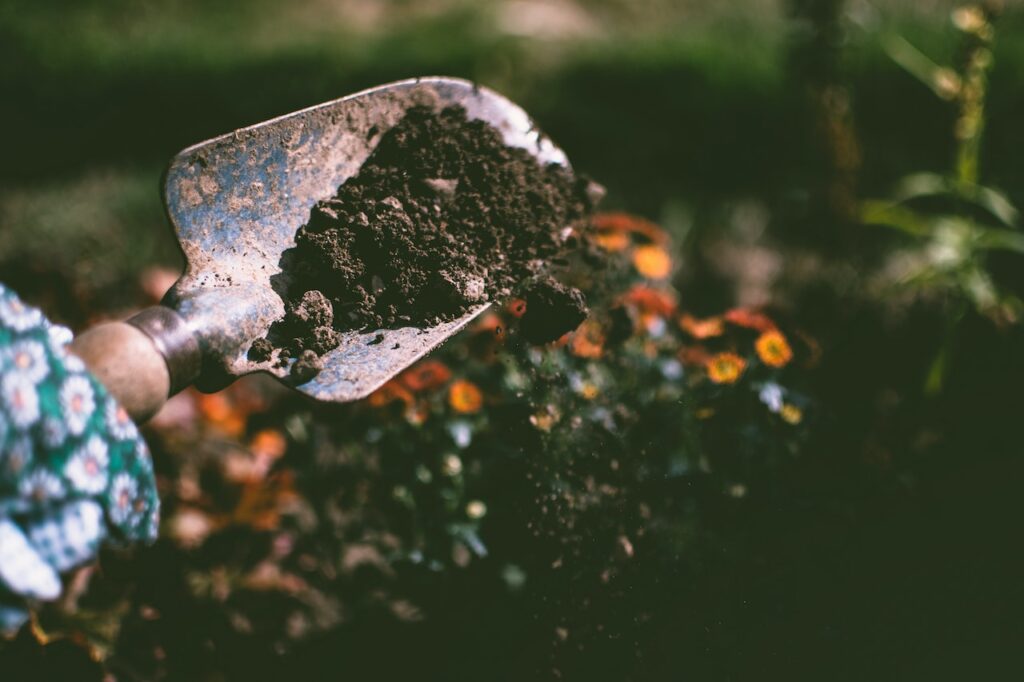The health and vibrancy of your lawn and garden begin beneath the surface, in the often overlooked realm of soil chemistry. One critical aspect of this chemistry is the pH level, which can significantly impact the growth of your plants and the overall success of your landscaping efforts. In this article, we’re going to unravel the pH puzzle and equip you with the knowledge and tools to adjust the pH of your soil effectively.

Understanding Soil pH
First, let’s break down the basics. Soil pH measures the acidity or alkalinity of your soil on a scale of 0 to 14. A pH level of 7 is considered neutral, below 7 is acidic, and above 7 is alkaline. Most plants prefer soil with a slightly acidic to neutral pH level, typically in the range of 6 to 7.5. However, the optimal pH can vary depending on the plant species you’re cultivating.
Why Does pH Matter?
Soil pH matters because it directly affects nutrient availability. When your soil’s pH is too high (alkaline) or too low (acidic), essential nutrients become chemically bound to the soil particles and become less available to your plants. This can lead to nutrient deficiencies, stunted growth, and poor overall plant health.
Now, let’s delve into the practical steps for adjusting your soil’s pH:
1. Test Your Soil:
Before you can adjust your soil’s pH, you need to know where it stands. Soil testing kits are readily available at garden centers or through your local agricultural extension office. These kits provide a pH reading and often recommendations for adjusting the pH.
2. Adjusting Acidic Soil (Low pH):
If your soil is too acidic (below 6), you can raise the pH by adding lime (calcium carbonate). The amount of lime needed depends on your soil type and the current pH level, so follow the recommendations from your soil test. Spread the lime evenly over the soil surface and water it in. It’s essential to apply lime well in advance of planting because it takes time to react with the soil.
3. Adjusting Alkaline Soil (High pH):
To lower the pH of alkaline soil (above 7.5), you can add elemental sulfur. Like lime, the amount required depends on your soil’s specific needs. Incorporate the sulfur into the soil thoroughly and water it in. Keep in mind that adjusting alkaline soil can be a slower process, so be patient and retest periodically.
4. Organic Matter and Compost:
In addition to lime or sulfur, incorporating organic matter and compost into your soil can help stabilize pH levels. Organic matter acts as a pH buffer, helping to maintain a more neutral pH. Compost also provides essential nutrients to your plants.
5. Choose pH-Adapted Plants:
If you find it challenging to adjust your soil’s pH to suit specific plant preferences, consider planting species that are well-suited to your soil’s existing pH. Native plants, in particular, are often adapted to the local soil conditions and can thrive without major pH adjustments.
6. Regular Monitoring:
Soil pH is not a one-time consideration. It can change over time due to various factors, including rainfall, the decomposition of organic matter, and the plants you’re growing. Regularly monitor your soil pH to ensure it remains in the desired range.
Adjusting soil pH is a critical aspect of successful gardening and landscaping. By understanding the importance of pH, regularly testing your soil, and taking appropriate corrective measures, you can create an optimal growing environment for your plants. Remember, healthy soil leads to thriving plants, which, in turn, contribute to the beauty and vitality of your yard and garden. So, embrace the pH puzzle and unlock the full potential of your landscaping endeavors.
Comments